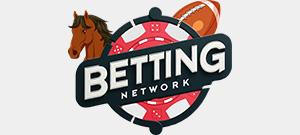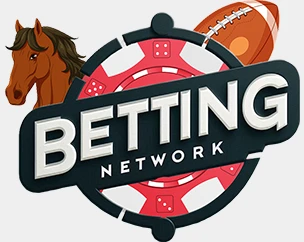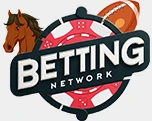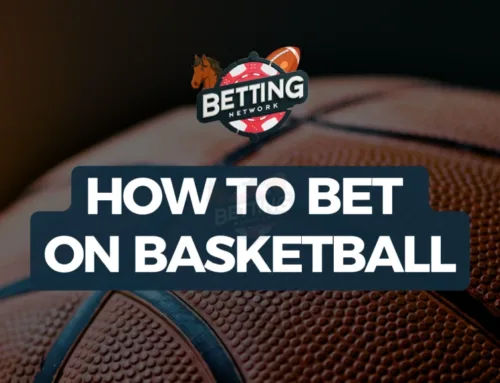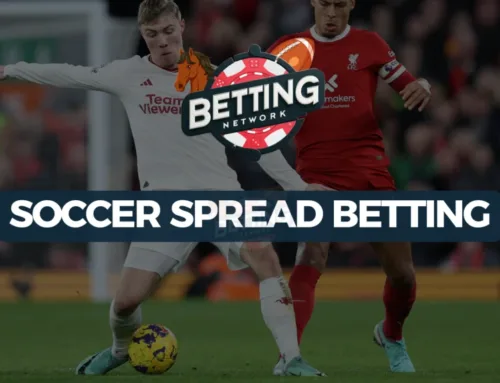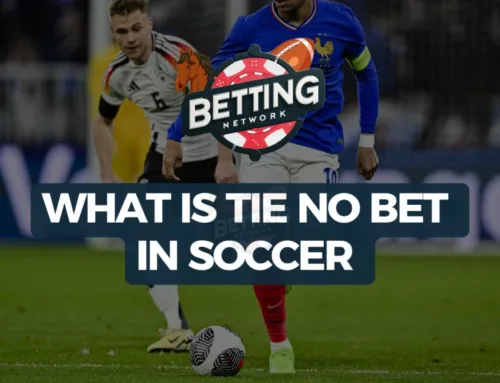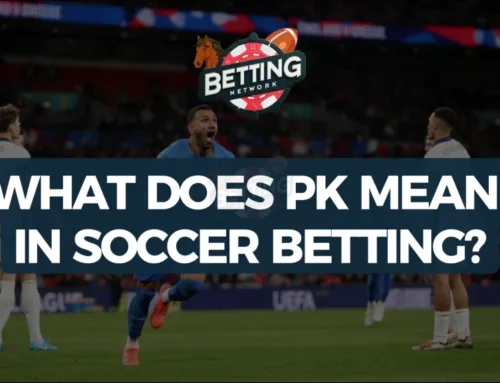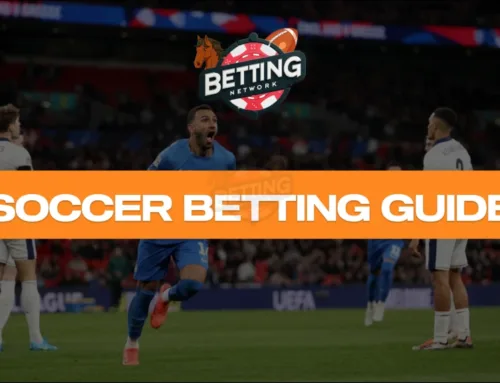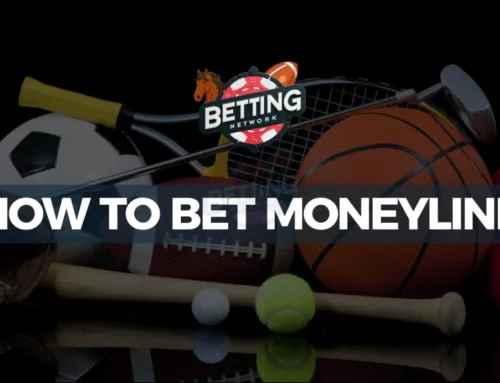Understanding how to read sports odds and what all these numbers actually mean is everything to a player. Sports odds represent the probability of something happening in a game, this something could be a team winning the game, a player scoring for their team, or just about anything that’s being wagered on.
Today I’ll teach you the basics of reading and interpreting sports odds in all of the most popular betting formats out there. By the time you’re done, you’ll know exactly what each number means in a sports book bet.
Let’s start!

Basics of Sports Betting Odds
Sports odds not only represent the likelihood of something happening in a sporting event, they also indicate how much money you can win if you correctly predict a specific outcome.
Here are some of the most common types of odds in sports betting.
Moneyline Odds
Simplest form of odds. They represent the amount you need to bet to win a specific amount.
Point Spread Odds
Common in sports like football and basketball. The bookmaker sets a margin of points by which a favored team must win.
Over/Under (Totals) Odds
These odds focus on the total number of points scored by both teams. You bet on whether the total count will be over or under the bet’s total.
Types of Sports Betting Odds
Depending on the bookmaker and platform, you’ll encounter American Odds, Decimal Odds or even Fractional Odds.
I would recommend you know how to interpret all of these, especially if you plan on betting on multiple sports. If you’d like to bet on MLS soccer, and UEFA Champions League matches, you’ll probably want to spread your bet across multiple platforms and not all of them might use American Odds.
However, if you’re planning on betting on the NFL, NBA and MLS on American platforms, you can just master American Odds and you’ll probably be fine. It’s up to you, just know that these are fairly easy to understand, so why not just learn how to read sports odds in their entirety?
American Odds

American odds, also known as moneyline odds, is pretty much how betting odds are known and recognized in the United States. These odds tell you how much money you can win on a bet relative to the amount you wager.
I might be biased, but American odds just seem easier to learn and read. The positive odds intuitively show the profit for a standard $100 bet, so it’s easier to see how much you’d win. Negative odds tell you how much you need to risk to win a standard $100, so you know the exact cost of betting on a favorite.
Here’s how they work:
| Aspect | Description | Example |
|---|---|---|
| Positive (+) Odds | Indicates the profit on a $100 bet | +200 means $100 wins $200 |
| Negative (-) Odds | Indicates the amount needed to bet to win $100 | -150 means bet $150 to win $100 |
Here’s how we can grab all this knowledge to figure out who’s the favorite and who’s the underdog in any form of sports betting. This is a key points in learning how to read sports odds!
| Odds Type | Description | Example |
|---|---|---|
| Positive Odds (Underdogs) | These odds have a plus (+) sign. They show how much profit you’ll make on a $100 bet. | +200: Win $200 on a $100 bet. Total return would be $300 (including the original $100 bet). |
| Negative Odds (Favorites) | These odds have a minus (-) sign. They indicate how much you need to bet to win $100. | -150: Bet $150 to win $100. Total return would be $250 (including the original $150 bet). |
American Odds Payouts

Odds directly impact payouts in bets, and American Odds are no exception. Here’s how it works:
| Odds Type | Calculation | Example |
|---|---|---|
| Positive Odds (+) | Profit = Bet amount × (Odds / 100) | For +200 odds, a $50 bet results in $50 × (200 / 100) = $100 profit. Total payout: $150 ($100 profit + $50 bet). |
| Negative Odds (-) | Profit = Bet amount / (Odds / 100) | For -150 odds, a $75 bet results in $75 / (150 / 100) = $50 profit. Total payout: $125 ($50 profit + $75 bet). |
Decimal / European Odds
Decimal odds are, as the name implied, expressed in decimal numbers. It states how much money you’ll get for every $1 you bet. Your potential winnings depend on the odds and your bet amount. Learning how to read sports odds (at least decimal odds) is realizing that, the higher the odds, the more you can win!
| Odds Type | Description | Example |
|---|---|---|
| Decimal Odds | Popular in Europe, Canada, and Australia. Represents the total payout, not just the profit. | 3.00 odds mean a $1 bet will return $3 (including the initial stake). |
For instance, if you see odds for 3.00, it means that for every $1 you bet, you get back a total of $3. If you place a $10 bet, you’ll get:
$10 × 3.00 = $30 (this includes your original bet).
Underdogs and Favorites
Figuring out who’s the underdog and favorite to win is fairly simple, all it takes is looking at the odds.
| Bet Type | Description | Example |
|---|---|---|
| Favorites | Lower odds due to a higher likelihood of winning. | Odds of 1.50 (Decimal) or 1/2 (Fractional). A $10 bet returns $15, with $5 profit. |
| Underdogs | Higher odds due to a lower likelihood of winning. | Odds of 4.00 (Decimal) or 3/1 (Fractional). A $10 bet returns $40, with $30 profit. |
All in all, bets with lower odds are less risky, but offer smaller payouts. Bets with higher odds are riskier, but offer bigger payouts. Simple enough, but understanding this is fundamental to learning how to read sports odds.
Decimal Odds Example

Let’s use the example we used earlier, but this time we’ll use European/Decimal odds. Imagine the odds look like this:
- Real Madrid: 1.80
- Arsenal: 6.00
Here’s how it’d play out:
1. Let’s read the decimal odds with the knowledge we got, so we can figure out what these odds mean.
- For Real Madrid at 1.80: You get $1.80 for every $1 you bet.
- For Arsenal at 6.00: You get $6.00 for every $1 you bet.
2. Let’s say you place a $50 bet. Here are the potential payouts.
- On Real Madrid: You get $90 (your $50 bet × 1.80).
- On Arsenal: You get $300 (your $50 bet × 6.00).
3. The higher odds (6.00) indicate that Arsenal is less likely to win, but if they do, the payout is much bigger.
So, with a $50 bet:
- Real Madrid (1.80): You get $90 if they win.
- Arsenal (6.00): You get $300 if they win.
Would you bet against Mbappe, Vinicius and the rest of the Real Madrid crew? well, that’s up to you, but you gotta admit those payouts look great!
Fractional Odds
Fractional odds (also known as British odds) are common in the UK and Ireland, so don’t be surprised if you find these in European betting platforms. These odds are expressed as fractions, such as 2/1 or 5/2, and they show the ratio of profit to the stake.
| Odds Type | Description | Example |
|---|---|---|
| Fractional Odds | Common in the UK. Represent the profit relative to the stake. | 2/1 means you win $2 for every $1 bet. |
How to Read Fractional Odds
Fractional odds are displayed as two numbers separated by a slash, such as 5/1 (pronounced “five to one”). Fractional odds are numbers separated by a slash; the first number (numerator) represents the profit you will make if you bet the second number (denominator).
Examples:
| Odds | Description | Example |
|---|---|---|
| 2/1 | For every $1 you bet, you win $2 profit. | A $10 bet results in a $20 profit, with a total return of $30 ($20 profit + $10 stake). |
| 5/2 | For every $2 you bet, you win $5 profit. | A $10 bet results in a $25 profit, with a total return of $35 ($25 profit + $10 stake). |
Let’s say Real Madrid and Arsenal are playing for the UCL, and we want to place a $50 bet. Imagine the odds are:
- Real Madrid: 4/5
- Arsenal: 5/1
Here’s how that would look like:
1. Alright, let’s see how to read sports odds here to fully understand how much we’d like to bet for either the favorite or the underdog.
- For Real Madrid at 4/5: You win $4 for every $5 you bet.
- For Arsenal at 5/1: You win $5 for every $1 you bet.
2. Let’s say you place a $50 bet and want to know how much you’ll make.
- On Real Madrid: You win $40 (your $50 bet × 4/5) + your original $50 back = $90 total.
- On Arsenal: You win $250 (your $50 bet × 5) + your original $50 back = $300 total.
3. The higher odds (5/1) indicate that Arsenal is less likely to win, but if they do, the payout is much bigger. So, with a $50 bet:
- Real Madrid (4/5): You get $90 if they win.
- Arsenal (5/1): You get $300 if they win.
Fractional odds are easy to understand and detail profits at a very granular level, right from the get-go. It got very popular in horse racing and it has stuck on certain platforms as the default way to express odds for all kinds of wagers.
How Odds Impact Payouts
The odds directly affect how much money you can win from a bet. The more unlikely an outcome is (according to a sportsbook), the bigger the payout.
| Calculation Method | Description | Formula |
|---|---|---|
| American Odds (Positive) | Calculates profit for positive odds. | Profit = Stake × (Odds / 100) |
| American Odds (Negative) | Calculates profit for negative odds. | Profit = Stake / (-Odds / 100) |
| Decimal Odds | Calculates total payout using decimal odds. | Total Payout = Stake × Decimal Odds |
| Fractional Odds | Calculates profit using fractional odds. | Profit = Stake × (Numerator / Denominator) |
What Do the + and – Mean in Sports Betting?
The + and – signs in sports betting are only seen in American Odds and they’re fairly easy to understand. An example is the best way to learn how these signs work in sports betting odds. Understanding what these signs mean is essential to mastering how to read sports odds.
Let’s say that Manchester City (favorite) and Chelsea F.C (underdog) from the Premier League are playing, and what the odds would look like.
Here’s a breakdown:
Positive (+) Odds
These are for the underdog or the less likely outcome. The number shows how much profit you would make on a $100 bet.
Here’s an example:
Let’s say Chelsea has +300 odds:
Meaning: If you bet $100 on Chelsea and they win, you would make $300 profit.
Payout Calculation:
- Bet Amount: $100
- Profit: $300
- Total Payout: $400 ($300 profit + $100 original bet)
Negative (-) Odds
These are for the favorite or the more likely outcome. The number shows how much you need to bet to win $100. Let’s say Manchester City has -150 odds:
Meaning: You need to bet $150 on Manchester City to win $100.
Payout Calculation:
- Bet Amount: $150
- Profit: $100
- Total Payout: $250 ($100 profit + $150 original bet)
So, a plus sign usually indicates the underdog in a specific bet. It states the profit you’d get for a $100 bet. In our previous example, a +300 odd means we’d get $300 profit.
A minus sign, on the other hand, indicates the favorite. It states how much you’d need to bet to win $100. In our previous example, a -150 odd means you’d need to bet $150 to get $100 in profit.

What Does It Mean When Odds Are Negative?
You’re bound to look at negative odds when dealing with American Odds in your favorite betting platform. Here’s what they mean:
When you see negative odds, it means that team or player is the favorite to win. Since more people bet on the favorite (less risky bet), it means the payouts are smaller. This is learning how to read sports odds 101.
Basically, these odds show you how much you need to bet to win a specific amount, usually $100.
How Negative Odds Work: An Example
Let’s use our previous example: Manchester City (favorites) vs Chelsea F.C (underdog) from the premier league. Manchester City has odds of -150 because, as good as Palmer is, they’re the favorites. This means you need to bet $150 to win $100.
Payout Calculation
Bet Amount: $150
Profit: $100
Total Payout: $250 (your $150 bet + $100 profit)
Why Negative Odds?
Negative odds are given to favorites because they’re more likely to win, so you need to risk more money to make a smaller profit. Since they’re more likely to win, your chances of winning the bet are higher, but the payout is lower compared to betting on an underdog with positive odds.
Negative odds basically tell you who’s the favorite and the risk-reward ratio for your bet. Ultimately, you have a choice to play it safe and win small, or be bold and win big.
What Does it Mean When Odds Are Positive?

When you see positive odds, it means that team (or player) is the underdog, or considered less likely to win. The odds tell you how much profit you would make on a $100 bet.
How Positive Odds Work: An Example
Let’s use an NBA example this time. Imagine that the Celtics are playing the Hawks, and the odds look like this:
1. Example: Let’s say the Hawks have odds of +300.
2. Meaning: If you bet $100 on the Hawks and they win, you would make a $300 profit.
Payout Calculation
- Bet Amount: $100
- Profit: $300
- Total Payout: $400 (your $100 bet + $300 profit)
Why Positive Odds?
Positive odds are given to underdogs because they’re less likely to win. You can risk less money and make a huge profit because they’re not the favorites. Your chances of winning the bet may be lower, but that also means that the payout is going to be dramatically higher, at least compared to betting on the favorite.
If you have reason to believe the underdog has a real chance of taking the game, you’ll want to leverage positive odds for a juicy payout.
Types of Bets in Sports Betting
What is an Over-Under Bet?
These are also known as “totals bet”, and it focuses on predicting whether the total goals/score/points of both teams will be over or under a set number that the sportsbook determines. We talked about these and other types of bets in our NFL betting guide.
This “set number” is known as “the line”. The sportsbook sets the line (the total combined score they expect for the game) and allow you to place your bet.
For example, in a soccer match between Manchester City and Chelsea, the over-under line might be set at 2.5 goals.
Now it’s time to place your bet. You got two options:
- Over Bet: You bet that the combined score will be more than 2.5 goals.
- Under Bet: You bet that the combined score will be less than 2.5 goals.
Over Bet
- If you bet on the over and the final score is 2-1 (total of 3 goals), you win because 3 is more than 2.5.
- If the final score is 1-1 (total of 2 goals), you lose because 2 is less than 2.5.
Under Bet
- If you bet on the under and the final score is 1-0 (total of 1 goal), you win because 1 is less than 2.5.
- If the final score is 2-2 (total of 4 goals), you lose because 4 is more than 2.5.
What is a Parlay Bet?

A parlay bet is a single bet that links together two or more individual bets (think of it like a combo bet). Each individual bet is called a “leg”, and you must win all of your legs to win the parlay. If even one of them loses, the entire parlay bet loses. We go into greater detail in our NFL parlay bet piece, so be sure to check that out.
How Parlay Bets Work
First, you combine multiple bets into one single bet. Let’s say that you want to bet on three UCL matches for the day. The legs would look like this:
- Manchester City to win
- Real Madrid to win
- Arsenal to win
The potential payout is much higher than if you placed each bet individually because the risk is higher. All bets need to win for you to win the parlay. Let’s build a three-leg parlay with those three individual bets.
- Manchester City to win at -150 odds
- Real Madrid to win at -120 odds
- Arsenal to win at +200 odds
If you bet $50 on this parlay, here’s how it works:
1. First, let’s calculate individual odds.
- Manchester City to win: Bet $150 to win $100
- Real Madrid to win: Bet $120 to win $100
- Arsenal to win: Bet $100 to win $200
2. Let’s calculate the combined odds, which use a different formula.
For brevity’s sake, let’s simplify by assuming it gives you a potential payout of $500 for your $50 bet.
3. Determining the Win Condition.
- All three teams must win their matches.
- If they all win, you win $500 (including your original $50 bet).
- If even one team loses, you lose your entire $50 bet.
Parlay bets are, by definition, high risk, high rewards bets. You must win all legs, after all. They’re also very flexible since you can combine multiple types of bets (moneyline, over-under, etc). and roll them up into a single combo bet.
What is a Teaser Bet?

Teaser bets require you to combo different bets (similar to parlay bets), but you can actually adjust the point spread or the line (over/under totals) in your favor. The payout is lower than your standard parlay jackpot, but it’s still substantial. Thing is, Teaser bets are not always an improvement over spread betting, it really depends on the sport you’re betting on.
For example, Teaser bets are much better in the NFL than in the NBA. In fact, we specifically recommend you avoid NBA teaser bets in our NBA betting strategy guide.
Let’s see how this works with a practical example. Imagine you want to make a two-team teaser bet on NFL games, since these have a better chance of giving you money. Initially, you’ll have your standard point spread.
Standard Point Spreads
- Game 1: Team A is favored to win by 7 points (Team A -7). You think that Team A will ultimately take the game, but you don’t think it’ll be by 7 points.
- Game 2: Team B is favored to win by 3 points (Team B -3). Again, you agree that team B will take it, but not by 3 points.
A teaser bet will allow you to adjust the margins to fit your criteria/prediction.
Teaser Bet Adjustment
The Teaser option allows you to adjust the spread by 6 points. Once you adjust it, it’d look like this:
Adjusted Point Spreads:
- Game 1: Team A -1 (instead of -7)
- Game 2: Team B +3 (instead of -3)
Your legs will still bet on teams A and B to take their respective games, but with a different spread.
You still have to win all the legs to win your teaser bet, but the adjusted point spread can make it easier to predict each individual bet. It’s a careful balance that minimizes risks if you have superior insight into how all these teams play and how they’re likely to perform.
What is a Prop Bet?

Prop bets are short for “proposition bets”, which try to predict specific events that happen during the game, rather than the final score. As you can imagine, these events could be just about anything, and that makes them some of the more creative and fun bets out there.
Types of Prop Bets
Some of the more common prop bets are:
- Player Props: Bets on individual player performances.
- Example: Will a specific player score a touchdown in an NFL game
- Team Props: Bets on team achievements or specific events during the game.
- Example: Will a team score more than 3 goals in a soccer match?
- Game Props: Bets on events happening during the game.
- Example: Will the coin toss result be heads or tails?
How Prop Bets Work
First, you’ll want to choose a specific event or occurrence that you believe will happen during the game. For instance, you might want to bet on a player scoring more than 20 points during the game. You place your bet, and hopefully the player comes through and breaks 20 points. Easy enough.
Example:
A player prop bet could look like this:
Bet: Will LeBron James score more than 30 points in a game?
Outcome:
- If LeBron scores 31 points, you win the bet.
- If he scores 29 points, you lose the bet.
A team Prop Bet could be something like this:
Bet: Will the New England Patriots score a touchdown in the first quarter?
Outcome:
- If they score a touchdown in the first quarter, you win the bet.
- If they don’t score a touchdown, you lose the bet.
Game prop bets are fun, often quirky bets. Here’s an example:
Bet: Will the Super Bowl coin toss result be heads?
Outcome:
- If the coin toss is heads, you win the bet.
- If it’s tails, you lose the bet.
What is a Pick’em Bet?

A Pick’em (also known as a PK or pick) is a type of bet with no favorite or underdog. The sportsbook sets the spread at zero for both teams, so you just bet on which team will win.
Both teams also have similar odds, sometimes even close to even money. You’d see both teams with odds of -110 or something similar. For example:
Let’s say there’s a football game between Team A and Team B, and it’s listed as a Pick’em.
- Team A: -110
- Team B: -110
Let’s say that you bet $50 on Team A.
Outcome
If team A wins, you’ll get $45.45 profit, plus your initial $50 back. It’d total to $95.45. If team A loses, you lose your money.
Why Use Pick’em Bets?
Pick’em bets are common when both teams are very evenly matched. If a sportsbook can’t determine a favorite, then it just turns into a Pick’em bet, and all you have to do is pick who you think will win.
What is a Point Spread?

Point spread bets are a type of bet that levels the playing field between two teams to make the overall wager more interesting. They do this by giving or taking points away from a team.
How Point Spreads Work
First, the sportsbook picks a favorite and an underdog and gives them a negative and positive point spread.
- Favorite: The team expected to win. They have a negative point spread (e.g., -7).
- Underdog: The team expected to lose. They have a positive point spread (e.g., +7).
This spread is set by the sportsbook, based on how much better they believe the favorite is. Here’s an example:
Let’s say there’s an NFL game between the Patriots and the Dolphins. The Patriots are the favorite, and the Dolphins the underdog.
- Patriots: -7
- Dolphins: +7
If you want to bet on the favorite, then the Patriots will need to win by more than 7 points for you to win.
Outcome:
- If the Patriots win by 8 or more points, you win the bet.
- If the Patriots win by exactly 7 points, it’s a tie (or push), and you get your money back.
- If the Patriots win by less than 7 points or lose, you lose the bet.
If you want to bet on the underdog, then the Dolphins need to either win the game or lose by less than 7 points.
Outcome:
- If the Dolphins win the game or lose by 6 points or fewer, you win the bet.
- If the Dolphins lose by exactly 7 points, it’s a tie (or push), and you get your money back.
- If the Dolphins lose by more than 7 points, you lose the bet.
What are Vegas Odds

“Vegas odds” refer to the betting odds set by sportsbooks in Las Vegas. Sin City is known for their casinos and sportsbook, so it’s naturally a major sports betting hub in the US. Players reference and follow the betting lines and odds that the local sportsbook use to get as much information as possible before placing a wager. Learning how to read sports odds, and contextualizing them with Vegas odds is very important.
Vegas odds are generally considered reliable and accurate because they’re set by experienced professionals. They typically influence betting lines and odds set by other sportsbook and online platforms worldwide. All sorts of factors affect these odds, and Vegas professionals and analysts do this for a living, so they’re very dynamic yet deliberate in their calculations.
If you’re still learning how to read sports odds, then it doesn’t hurt to look at Vegas odds and analyze what they believe is most likely to happen and why. Just remember, whether you’re in Vegas or planning your next sportsbetting parlay, you need to be responsible with your money at all times.
What is Implied Probability?
Implied probability is a way of expressing betting odds as a percentage. It helps us visualize how likely the bookmaker thinks an event is to occur. Even if you know how to read sports odds, implied probabilities are a nifty way of comparing your own assessments with the bookmaker’s odds, and it can lead to very interesting insights.
What is Chalk?
In sports betting, “chalk” is a term assigned to the favorites in a bet. In American odds, the team with negative odds is the chalk (favorites). When you “bet on chalk”, you’re placing your bet on the favorites. Here’s an example:
Let’s say there’s a basketball game between the Lakers and the Bulls:
- Lakers: -250 (chalk, favorite)
- Bulls: +200 (underdog)
Betting on the Chalk (Lakers)
- Odds: -250
- Meaning: you need to bet $250 to win $100 because the Lakers are expected to win.
- Outcome: if the Lakers win, you win your bet and make a smaller profit because they were heavily favored.
Frequently Asked Questions
What do +200 odds mean?
+200 odds mean you will win $200 for every $100 bet placed.
How do I convert fractional odds to decimal odds?
Add 1 to the fraction: For 2/1, the decimal odds are 3.00.
What are the most common types of sports bets?
Moneyline, Point Spread, and Over/Under bets are the most common types.
Understanding how to read sports odds and what all these numbers actually mean is everything to a player. Sports odds represent the probability of something happening in a game, this something could be a team winning the game, a player scoring for their team, or just about anything that’s being wagered on.
Today I’ll teach you the basics of reading and interpreting sports odds in all of the most popular betting formats out there. By the time you’re done, you’ll know exactly what each number means in a sports book bet.
Let’s start!

Basics of Sports Betting Odds
Sports odds not only represent the likelihood of something happening in a sporting event, they also indicate how much money you can win if you correctly predict a specific outcome.
Here are some of the most common types of odds in sports betting.
Moneyline Odds
Simplest form of odds. They represent the amount you need to bet to win a specific amount.
Point Spread Odds
Common in sports like football and basketball. The bookmaker sets a margin of points by which a favored team must win.
Over/Under (Totals) Odds
These odds focus on the total number of points scored by both teams. You bet on whether the total count will be over or under the bet’s total.
Types of Sports Betting Odds
Depending on the bookmaker and platform, you’ll encounter American Odds, Decimal Odds or even Fractional Odds.
I would recommend you know how to interpret all of these, especially if you plan on betting on multiple sports. If you’d like to bet on MLS soccer, and UEFA Champions League matches, you’ll probably want to spread your bet across multiple platforms and not all of them might use American Odds.
However, if you’re planning on betting on the NFL, NBA and MLS on American platforms, you can just master American Odds and you’ll probably be fine. It’s up to you, just know that these are fairly easy to understand, so why not just learn how to read sports odds in their entirety?
American Odds

American odds, also known as moneyline odds, is pretty much how betting odds are known and recognized in the United States. These odds tell you how much money you can win on a bet relative to the amount you wager.
I might be biased, but American odds just seem easier to learn and read. The positive odds intuitively show the profit for a standard $100 bet, so it’s easier to see how much you’d win. Negative odds tell you how much you need to risk to win a standard $100, so you know the exact cost of betting on a favorite.
Here’s how they work:
| Aspect | Description | Example |
|---|---|---|
| Positive (+) Odds | Indicates the profit on a $100 bet | +200 means $100 wins $200 |
| Negative (-) Odds | Indicates the amount needed to bet to win $100 | -150 means bet $150 to win $100 |
Here’s how we can grab all this knowledge to figure out who’s the favorite and who’s the underdog in any form of sports betting. This is a key points in learning how to read sports odds!
| Odds Type | Description | Example |
|---|---|---|
| Positive Odds (Underdogs) | These odds have a plus (+) sign. They show how much profit you’ll make on a $100 bet. | +200: Win $200 on a $100 bet. Total return would be $300 (including the original $100 bet). |
| Negative Odds (Favorites) | These odds have a minus (-) sign. They indicate how much you need to bet to win $100. | -150: Bet $150 to win $100. Total return would be $250 (including the original $150 bet). |
American Odds Payouts

Odds directly impact payouts in bets, and American Odds are no exception. Here’s how it works:
| Odds Type | Calculation | Example |
|---|---|---|
| Positive Odds (+) | Profit = Bet amount × (Odds / 100) | For +200 odds, a $50 bet results in $50 × (200 / 100) = $100 profit. Total payout: $150 ($100 profit + $50 bet). |
| Negative Odds (-) | Profit = Bet amount / (Odds / 100) | For -150 odds, a $75 bet results in $75 / (150 / 100) = $50 profit. Total payout: $125 ($50 profit + $75 bet). |
Decimal / European Odds
Decimal odds are, as the name implied, expressed in decimal numbers. It states how much money you’ll get for every $1 you bet. Your potential winnings depend on the odds and your bet amount. Learning how to read sports odds (at least decimal odds) is realizing that, the higher the odds, the more you can win!
| Odds Type | Description | Example |
|---|---|---|
| Decimal Odds | Popular in Europe, Canada, and Australia. Represents the total payout, not just the profit. | 3.00 odds mean a $1 bet will return $3 (including the initial stake). |
For instance, if you see odds for 3.00, it means that for every $1 you bet, you get back a total of $3. If you place a $10 bet, you’ll get:
$10 × 3.00 = $30 (this includes your original bet).
Underdogs and Favorites
Figuring out who’s the underdog and favorite to win is fairly simple, all it takes is looking at the odds.
| Bet Type | Description | Example |
|---|---|---|
| Favorites | Lower odds due to a higher likelihood of winning. | Odds of 1.50 (Decimal) or 1/2 (Fractional). A $10 bet returns $15, with $5 profit. |
| Underdogs | Higher odds due to a lower likelihood of winning. | Odds of 4.00 (Decimal) or 3/1 (Fractional). A $10 bet returns $40, with $30 profit. |
All in all, bets with lower odds are less risky, but offer smaller payouts. Bets with higher odds are riskier, but offer bigger payouts. Simple enough, but understanding this is fundamental to learning how to read sports odds.
Decimal Odds Example

Let’s use the example we used earlier, but this time we’ll use European/Decimal odds. Imagine the odds look like this:
- Real Madrid: 1.80
- Arsenal: 6.00
Here’s how it’d play out:
1. Let’s read the decimal odds with the knowledge we got, so we can figure out what these odds mean.
- For Real Madrid at 1.80: You get $1.80 for every $1 you bet.
- For Arsenal at 6.00: You get $6.00 for every $1 you bet.
2. Let’s say you place a $50 bet. Here are the potential payouts.
- On Real Madrid: You get $90 (your $50 bet × 1.80).
- On Arsenal: You get $300 (your $50 bet × 6.00).
3. The higher odds (6.00) indicate that Arsenal is less likely to win, but if they do, the payout is much bigger.
So, with a $50 bet:
- Real Madrid (1.80): You get $90 if they win.
- Arsenal (6.00): You get $300 if they win.
Would you bet against Mbappe, Vinicius and the rest of the Real Madrid crew? well, that’s up to you, but you gotta admit those payouts look great!
Fractional Odds
Fractional odds (also known as British odds) are common in the UK and Ireland, so don’t be surprised if you find these in European betting platforms. These odds are expressed as fractions, such as 2/1 or 5/2, and they show the ratio of profit to the stake.
| Odds Type | Description | Example |
|---|---|---|
| Fractional Odds | Common in the UK. Represent the profit relative to the stake. | 2/1 means you win $2 for every $1 bet. |
How to Read Fractional Odds
Fractional odds are displayed as two numbers separated by a slash, such as 5/1 (pronounced “five to one”). Fractional odds are numbers separated by a slash; the first number (numerator) represents the profit you will make if you bet the second number (denominator).
Examples:
| Odds | Description | Example |
|---|---|---|
| 2/1 | For every $1 you bet, you win $2 profit. | A $10 bet results in a $20 profit, with a total return of $30 ($20 profit + $10 stake). |
| 5/2 | For every $2 you bet, you win $5 profit. | A $10 bet results in a $25 profit, with a total return of $35 ($25 profit + $10 stake). |
Let’s say Real Madrid and Arsenal are playing for the UCL, and we want to place a $50 bet. Imagine the odds are:
- Real Madrid: 4/5
- Arsenal: 5/1
Here’s how that would look like:
1. Alright, let’s see how to read sports odds here to fully understand how much we’d like to bet for either the favorite or the underdog.
- For Real Madrid at 4/5: You win $4 for every $5 you bet.
- For Arsenal at 5/1: You win $5 for every $1 you bet.
2. Let’s say you place a $50 bet and want to know how much you’ll make.
- On Real Madrid: You win $40 (your $50 bet × 4/5) + your original $50 back = $90 total.
- On Arsenal: You win $250 (your $50 bet × 5) + your original $50 back = $300 total.
3. The higher odds (5/1) indicate that Arsenal is less likely to win, but if they do, the payout is much bigger. So, with a $50 bet:
- Real Madrid (4/5): You get $90 if they win.
- Arsenal (5/1): You get $300 if they win.
Fractional odds are easy to understand and detail profits at a very granular level, right from the get-go. It got very popular in horse racing and it has stuck on certain platforms as the default way to express odds for all kinds of wagers.
How Odds Impact Payouts
The odds directly affect how much money you can win from a bet. The more unlikely an outcome is (according to a sportsbook), the bigger the payout.
| Calculation Method | Description | Formula |
|---|---|---|
| American Odds (Positive) | Calculates profit for positive odds. | Profit = Stake × (Odds / 100) |
| American Odds (Negative) | Calculates profit for negative odds. | Profit = Stake / (-Odds / 100) |
| Decimal Odds | Calculates total payout using decimal odds. | Total Payout = Stake × Decimal Odds |
| Fractional Odds | Calculates profit using fractional odds. | Profit = Stake × (Numerator / Denominator) |
What Do the + and – Mean in Sports Betting?
The + and – signs in sports betting are only seen in American Odds and they’re fairly easy to understand. An example is the best way to learn how these signs work in sports betting odds. Understanding what these signs mean is essential to mastering how to read sports odds.
Let’s say that Manchester City (favorite) and Chelsea F.C (underdog) from the Premier League are playing, and what the odds would look like.
Here’s a breakdown:
Positive (+) Odds
These are for the underdog or the less likely outcome. The number shows how much profit you would make on a $100 bet.
Here’s an example:
Let’s say Chelsea has +300 odds:
Meaning: If you bet $100 on Chelsea and they win, you would make $300 profit.
Payout Calculation:
- Bet Amount: $100
- Profit: $300
- Total Payout: $400 ($300 profit + $100 original bet)
Negative (-) Odds
These are for the favorite or the more likely outcome. The number shows how much you need to bet to win $100. Let’s say Manchester City has -150 odds:
Meaning: You need to bet $150 on Manchester City to win $100.
Payout Calculation:
- Bet Amount: $150
- Profit: $100
- Total Payout: $250 ($100 profit + $150 original bet)
So, a plus sign usually indicates the underdog in a specific bet. It states the profit you’d get for a $100 bet. In our previous example, a +300 odd means we’d get $300 profit.
A minus sign, on the other hand, indicates the favorite. It states how much you’d need to bet to win $100. In our previous example, a -150 odd means you’d need to bet $150 to get $100 in profit.

What Does It Mean When Odds Are Negative?
You’re bound to look at negative odds when dealing with American Odds in your favorite betting platform. Here’s what they mean:
When you see negative odds, it means that team or player is the favorite to win. Since more people bet on the favorite (less risky bet), it means the payouts are smaller. This is learning how to read sports odds 101.
Basically, these odds show you how much you need to bet to win a specific amount, usually $100.
How Negative Odds Work: An Example
Let’s use our previous example: Manchester City (favorites) vs Chelsea F.C (underdog) from the premier league. Manchester City has odds of -150 because, as good as Palmer is, they’re the favorites. This means you need to bet $150 to win $100.
Payout Calculation
Bet Amount: $150
Profit: $100
Total Payout: $250 (your $150 bet + $100 profit)
Why Negative Odds?
Negative odds are given to favorites because they’re more likely to win, so you need to risk more money to make a smaller profit. Since they’re more likely to win, your chances of winning the bet are higher, but the payout is lower compared to betting on an underdog with positive odds.
Negative odds basically tell you who’s the favorite and the risk-reward ratio for your bet. Ultimately, you have a choice to play it safe and win small, or be bold and win big.
What Does it Mean When Odds Are Positive?

When you see positive odds, it means that team (or player) is the underdog, or considered less likely to win. The odds tell you how much profit you would make on a $100 bet.
How Positive Odds Work: An Example
Let’s use an NBA example this time. Imagine that the Celtics are playing the Hawks, and the odds look like this:
1. Example: Let’s say the Hawks have odds of +300.
2. Meaning: If you bet $100 on the Hawks and they win, you would make a $300 profit.
Payout Calculation
- Bet Amount: $100
- Profit: $300
- Total Payout: $400 (your $100 bet + $300 profit)
Why Positive Odds?
Positive odds are given to underdogs because they’re less likely to win. You can risk less money and make a huge profit because they’re not the favorites. Your chances of winning the bet may be lower, but that also means that the payout is going to be dramatically higher, at least compared to betting on the favorite.
If you have reason to believe the underdog has a real chance of taking the game, you’ll want to leverage positive odds for a juicy payout.
Types of Bets in Sports Betting
What is an Over-Under Bet?
These are also known as “totals bet”, and it focuses on predicting whether the total goals/score/points of both teams will be over or under a set number that the sportsbook determines. We talked about these and other types of bets in our NFL betting guide.
This “set number” is known as “the line”. The sportsbook sets the line (the total combined score they expect for the game) and allow you to place your bet.
For example, in a soccer match between Manchester City and Chelsea, the over-under line might be set at 2.5 goals.
Now it’s time to place your bet. You got two options:
- Over Bet: You bet that the combined score will be more than 2.5 goals.
- Under Bet: You bet that the combined score will be less than 2.5 goals.
Over Bet
- If you bet on the over and the final score is 2-1 (total of 3 goals), you win because 3 is more than 2.5.
- If the final score is 1-1 (total of 2 goals), you lose because 2 is less than 2.5.
Under Bet
- If you bet on the under and the final score is 1-0 (total of 1 goal), you win because 1 is less than 2.5.
- If the final score is 2-2 (total of 4 goals), you lose because 4 is more than 2.5.
What is a Parlay Bet?

A parlay bet is a single bet that links together two or more individual bets (think of it like a combo bet). Each individual bet is called a “leg”, and you must win all of your legs to win the parlay. If even one of them loses, the entire parlay bet loses. We go into greater detail in our NFL parlay bet piece, so be sure to check that out.
How Parlay Bets Work
First, you combine multiple bets into one single bet. Let’s say that you want to bet on three UCL matches for the day. The legs would look like this:
- Manchester City to win
- Real Madrid to win
- Arsenal to win
The potential payout is much higher than if you placed each bet individually because the risk is higher. All bets need to win for you to win the parlay. Let’s build a three-leg parlay with those three individual bets.
- Manchester City to win at -150 odds
- Real Madrid to win at -120 odds
- Arsenal to win at +200 odds
If you bet $50 on this parlay, here’s how it works:
1. First, let’s calculate individual odds.
- Manchester City to win: Bet $150 to win $100
- Real Madrid to win: Bet $120 to win $100
- Arsenal to win: Bet $100 to win $200
2. Let’s calculate the combined odds, which use a different formula.
For brevity’s sake, let’s simplify by assuming it gives you a potential payout of $500 for your $50 bet.
3. Determining the Win Condition.
- All three teams must win their matches.
- If they all win, you win $500 (including your original $50 bet).
- If even one team loses, you lose your entire $50 bet.
Parlay bets are, by definition, high risk, high rewards bets. You must win all legs, after all. They’re also very flexible since you can combine multiple types of bets (moneyline, over-under, etc). and roll them up into a single combo bet.
What is a Teaser Bet?

Teaser bets require you to combo different bets (similar to parlay bets), but you can actually adjust the point spread or the line (over/under totals) in your favor. The payout is lower than your standard parlay jackpot, but it’s still substantial. Thing is, Teaser bets are not always an improvement over spread betting, it really depends on the sport you’re betting on.
For example, Teaser bets are much better in the NFL than in the NBA. In fact, we specifically recommend you avoid NBA teaser bets in our NBA betting strategy guide.
Let’s see how this works with a practical example. Imagine you want to make a two-team teaser bet on NFL games, since these have a better chance of giving you money. Initially, you’ll have your standard point spread.
Standard Point Spreads
- Game 1: Team A is favored to win by 7 points (Team A -7). You think that Team A will ultimately take the game, but you don’t think it’ll be by 7 points.
- Game 2: Team B is favored to win by 3 points (Team B -3). Again, you agree that team B will take it, but not by 3 points.
A teaser bet will allow you to adjust the margins to fit your criteria/prediction.
Teaser Bet Adjustment
The Teaser option allows you to adjust the spread by 6 points. Once you adjust it, it’d look like this:
Adjusted Point Spreads:
- Game 1: Team A -1 (instead of -7)
- Game 2: Team B +3 (instead of -3)
Your legs will still bet on teams A and B to take their respective games, but with a different spread.
You still have to win all the legs to win your teaser bet, but the adjusted point spread can make it easier to predict each individual bet. It’s a careful balance that minimizes risks if you have superior insight into how all these teams play and how they’re likely to perform.
What is a Prop Bet?

Prop bets are short for “proposition bets”, which try to predict specific events that happen during the game, rather than the final score. As you can imagine, these events could be just about anything, and that makes them some of the more creative and fun bets out there.
Types of Prop Bets
Some of the more common prop bets are:
- Player Props: Bets on individual player performances.
- Example: Will a specific player score a touchdown in an NFL game
- Team Props: Bets on team achievements or specific events during the game.
- Example: Will a team score more than 3 goals in a soccer match?
- Game Props: Bets on events happening during the game.
- Example: Will the coin toss result be heads or tails?
How Prop Bets Work
First, you’ll want to choose a specific event or occurrence that you believe will happen during the game. For instance, you might want to bet on a player scoring more than 20 points during the game. You place your bet, and hopefully the player comes through and breaks 20 points. Easy enough.
Example:
A player prop bet could look like this:
Bet: Will LeBron James score more than 30 points in a game?
Outcome:
- If LeBron scores 31 points, you win the bet.
- If he scores 29 points, you lose the bet.
A team Prop Bet could be something like this:
Bet: Will the New England Patriots score a touchdown in the first quarter?
Outcome:
- If they score a touchdown in the first quarter, you win the bet.
- If they don’t score a touchdown, you lose the bet.
Game prop bets are fun, often quirky bets. Here’s an example:
Bet: Will the Super Bowl coin toss result be heads?
Outcome:
- If the coin toss is heads, you win the bet.
- If it’s tails, you lose the bet.
What is a Pick’em Bet?

A Pick’em (also known as a PK or pick) is a type of bet with no favorite or underdog. The sportsbook sets the spread at zero for both teams, so you just bet on which team will win.
Both teams also have similar odds, sometimes even close to even money. You’d see both teams with odds of -110 or something similar. For example:
Let’s say there’s a football game between Team A and Team B, and it’s listed as a Pick’em.
- Team A: -110
- Team B: -110
Let’s say that you bet $50 on Team A.
Outcome
If team A wins, you’ll get $45.45 profit, plus your initial $50 back. It’d total to $95.45. If team A loses, you lose your money.
Why Use Pick’em Bets?
Pick’em bets are common when both teams are very evenly matched. If a sportsbook can’t determine a favorite, then it just turns into a Pick’em bet, and all you have to do is pick who you think will win.
What is a Point Spread?

Point spread bets are a type of bet that levels the playing field between two teams to make the overall wager more interesting. They do this by giving or taking points away from a team.
How Point Spreads Work
First, the sportsbook picks a favorite and an underdog and gives them a negative and positive point spread.
- Favorite: The team expected to win. They have a negative point spread (e.g., -7).
- Underdog: The team expected to lose. They have a positive point spread (e.g., +7).
This spread is set by the sportsbook, based on how much better they believe the favorite is. Here’s an example:
Let’s say there’s an NFL game between the Patriots and the Dolphins. The Patriots are the favorite, and the Dolphins the underdog.
- Patriots: -7
- Dolphins: +7
If you want to bet on the favorite, then the Patriots will need to win by more than 7 points for you to win.
Outcome:
- If the Patriots win by 8 or more points, you win the bet.
- If the Patriots win by exactly 7 points, it’s a tie (or push), and you get your money back.
- If the Patriots win by less than 7 points or lose, you lose the bet.
If you want to bet on the underdog, then the Dolphins need to either win the game or lose by less than 7 points.
Outcome:
- If the Dolphins win the game or lose by 6 points or fewer, you win the bet.
- If the Dolphins lose by exactly 7 points, it’s a tie (or push), and you get your money back.
- If the Dolphins lose by more than 7 points, you lose the bet.
What are Vegas Odds

“Vegas odds” refer to the betting odds set by sportsbooks in Las Vegas. Sin City is known for their casinos and sportsbook, so it’s naturally a major sports betting hub in the US. Players reference and follow the betting lines and odds that the local sportsbook use to get as much information as possible before placing a wager. Learning how to read sports odds, and contextualizing them with Vegas odds is very important.
Vegas odds are generally considered reliable and accurate because they’re set by experienced professionals. They typically influence betting lines and odds set by other sportsbook and online platforms worldwide. All sorts of factors affect these odds, and Vegas professionals and analysts do this for a living, so they’re very dynamic yet deliberate in their calculations.
If you’re still learning how to read sports odds, then it doesn’t hurt to look at Vegas odds and analyze what they believe is most likely to happen and why. Just remember, whether you’re in Vegas or planning your next sportsbetting parlay, you need to be responsible with your money at all times.
What is Implied Probability?
Implied probability is a way of expressing betting odds as a percentage. It helps us visualize how likely the bookmaker thinks an event is to occur. Even if you know how to read sports odds, implied probabilities are a nifty way of comparing your own assessments with the bookmaker’s odds, and it can lead to very interesting insights.
What is Chalk?
In sports betting, “chalk” is a term assigned to the favorites in a bet. In American odds, the team with negative odds is the chalk (favorites). When you “bet on chalk”, you’re placing your bet on the favorites. Here’s an example:
Let’s say there’s a basketball game between the Lakers and the Bulls:
- Lakers: -250 (chalk, favorite)
- Bulls: +200 (underdog)
Betting on the Chalk (Lakers)
- Odds: -250
- Meaning: you need to bet $250 to win $100 because the Lakers are expected to win.
- Outcome: if the Lakers win, you win your bet and make a smaller profit because they were heavily favored.
Frequently Asked Questions
What do +200 odds mean?
+200 odds mean you will win $200 for every $100 bet placed.
How do I convert fractional odds to decimal odds?
Add 1 to the fraction: For 2/1, the decimal odds are 3.00.
What are the most common types of sports bets?
Moneyline, Point Spread, and Over/Under bets are the most common types.
Understanding how to read sports odds and what all these numbers actually mean is everything to a player. Sports odds represent the probability of something happening in a game, this something could be a team winning the game, a player scoring for their team, or just about anything that’s being wagered on.
Today I’ll teach you the basics of reading and interpreting sports odds in all of the most popular betting formats out there. By the time you’re done, you’ll know exactly what each number means in a sports book bet.
Let’s start!

Basics of Sports Betting Odds
Sports odds not only represent the likelihood of something happening in a sporting event, they also indicate how much money you can win if you correctly predict a specific outcome.
Here are some of the most common types of odds in sports betting.
Moneyline Odds
Simplest form of odds. They represent the amount you need to bet to win a specific amount.
Point Spread Odds
Common in sports like football and basketball. The bookmaker sets a margin of points by which a favored team must win.
Over/Under (Totals) Odds
These odds focus on the total number of points scored by both teams. You bet on whether the total count will be over or under the bet’s total.
Types of Sports Betting Odds
Depending on the bookmaker and platform, you’ll encounter American Odds, Decimal Odds or even Fractional Odds.
I would recommend you know how to interpret all of these, especially if you plan on betting on multiple sports. If you’d like to bet on MLS soccer, and UEFA Champions League matches, you’ll probably want to spread your bet across multiple platforms and not all of them might use American Odds.
However, if you’re planning on betting on the NFL, NBA and MLS on American platforms, you can just master American Odds and you’ll probably be fine. It’s up to you, just know that these are fairly easy to understand, so why not just learn how to read sports odds in their entirety?
American Odds

American odds, also known as moneyline odds, is pretty much how betting odds are known and recognized in the United States. These odds tell you how much money you can win on a bet relative to the amount you wager.
I might be biased, but American odds just seem easier to learn and read. The positive odds intuitively show the profit for a standard $100 bet, so it’s easier to see how much you’d win. Negative odds tell you how much you need to risk to win a standard $100, so you know the exact cost of betting on a favorite.
Here’s how they work:
| Aspect | Description | Example |
|---|---|---|
| Positive (+) Odds | Indicates the profit on a $100 bet | +200 means $100 wins $200 |
| Negative (-) Odds | Indicates the amount needed to bet to win $100 | -150 means bet $150 to win $100 |
Here’s how we can grab all this knowledge to figure out who’s the favorite and who’s the underdog in any form of sports betting. This is a key points in learning how to read sports odds!
| Odds Type | Description | Example |
|---|---|---|
| Positive Odds (Underdogs) | These odds have a plus (+) sign. They show how much profit you’ll make on a $100 bet. | +200: Win $200 on a $100 bet. Total return would be $300 (including the original $100 bet). |
| Negative Odds (Favorites) | These odds have a minus (-) sign. They indicate how much you need to bet to win $100. | -150: Bet $150 to win $100. Total return would be $250 (including the original $150 bet). |
American Odds Payouts

Odds directly impact payouts in bets, and American Odds are no exception. Here’s how it works:
| Odds Type | Calculation | Example |
|---|---|---|
| Positive Odds (+) | Profit = Bet amount × (Odds / 100) | For +200 odds, a $50 bet results in $50 × (200 / 100) = $100 profit. Total payout: $150 ($100 profit + $50 bet). |
| Negative Odds (-) | Profit = Bet amount / (Odds / 100) | For -150 odds, a $75 bet results in $75 / (150 / 100) = $50 profit. Total payout: $125 ($50 profit + $75 bet). |
Decimal / European Odds
Decimal odds are, as the name implied, expressed in decimal numbers. It states how much money you’ll get for every $1 you bet. Your potential winnings depend on the odds and your bet amount. Learning how to read sports odds (at least decimal odds) is realizing that, the higher the odds, the more you can win!
| Odds Type | Description | Example |
|---|---|---|
| Decimal Odds | Popular in Europe, Canada, and Australia. Represents the total payout, not just the profit. | 3.00 odds mean a $1 bet will return $3 (including the initial stake). |
For instance, if you see odds for 3.00, it means that for every $1 you bet, you get back a total of $3. If you place a $10 bet, you’ll get:
$10 × 3.00 = $30 (this includes your original bet).
Underdogs and Favorites
Figuring out who’s the underdog and favorite to win is fairly simple, all it takes is looking at the odds.
| Bet Type | Description | Example |
|---|---|---|
| Favorites | Lower odds due to a higher likelihood of winning. | Odds of 1.50 (Decimal) or 1/2 (Fractional). A $10 bet returns $15, with $5 profit. |
| Underdogs | Higher odds due to a lower likelihood of winning. | Odds of 4.00 (Decimal) or 3/1 (Fractional). A $10 bet returns $40, with $30 profit. |
All in all, bets with lower odds are less risky, but offer smaller payouts. Bets with higher odds are riskier, but offer bigger payouts. Simple enough, but understanding this is fundamental to learning how to read sports odds.
Decimal Odds Example

Let’s use the example we used earlier, but this time we’ll use European/Decimal odds. Imagine the odds look like this:
- Real Madrid: 1.80
- Arsenal: 6.00
Here’s how it’d play out:
1. Let’s read the decimal odds with the knowledge we got, so we can figure out what these odds mean.
- For Real Madrid at 1.80: You get $1.80 for every $1 you bet.
- For Arsenal at 6.00: You get $6.00 for every $1 you bet.
2. Let’s say you place a $50 bet. Here are the potential payouts.
- On Real Madrid: You get $90 (your $50 bet × 1.80).
- On Arsenal: You get $300 (your $50 bet × 6.00).
3. The higher odds (6.00) indicate that Arsenal is less likely to win, but if they do, the payout is much bigger.
So, with a $50 bet:
- Real Madrid (1.80): You get $90 if they win.
- Arsenal (6.00): You get $300 if they win.
Would you bet against Mbappe, Vinicius and the rest of the Real Madrid crew? well, that’s up to you, but you gotta admit those payouts look great!
Fractional Odds
Fractional odds (also known as British odds) are common in the UK and Ireland, so don’t be surprised if you find these in European betting platforms. These odds are expressed as fractions, such as 2/1 or 5/2, and they show the ratio of profit to the stake.
| Odds Type | Description | Example |
|---|---|---|
| Fractional Odds | Common in the UK. Represent the profit relative to the stake. | 2/1 means you win $2 for every $1 bet. |
How to Read Fractional Odds
Fractional odds are displayed as two numbers separated by a slash, such as 5/1 (pronounced “five to one”). Fractional odds are numbers separated by a slash; the first number (numerator) represents the profit you will make if you bet the second number (denominator).
Examples:
| Odds | Description | Example |
|---|---|---|
| 2/1 | For every $1 you bet, you win $2 profit. | A $10 bet results in a $20 profit, with a total return of $30 ($20 profit + $10 stake). |
| 5/2 | For every $2 you bet, you win $5 profit. | A $10 bet results in a $25 profit, with a total return of $35 ($25 profit + $10 stake). |
Let’s say Real Madrid and Arsenal are playing for the UCL, and we want to place a $50 bet. Imagine the odds are:
- Real Madrid: 4/5
- Arsenal: 5/1
Here’s how that would look like:
1. Alright, let’s see how to read sports odds here to fully understand how much we’d like to bet for either the favorite or the underdog.
- For Real Madrid at 4/5: You win $4 for every $5 you bet.
- For Arsenal at 5/1: You win $5 for every $1 you bet.
2. Let’s say you place a $50 bet and want to know how much you’ll make.
- On Real Madrid: You win $40 (your $50 bet × 4/5) + your original $50 back = $90 total.
- On Arsenal: You win $250 (your $50 bet × 5) + your original $50 back = $300 total.
3. The higher odds (5/1) indicate that Arsenal is less likely to win, but if they do, the payout is much bigger. So, with a $50 bet:
- Real Madrid (4/5): You get $90 if they win.
- Arsenal (5/1): You get $300 if they win.
Fractional odds are easy to understand and detail profits at a very granular level, right from the get-go. It got very popular in horse racing and it has stuck on certain platforms as the default way to express odds for all kinds of wagers.
How Odds Impact Payouts
The odds directly affect how much money you can win from a bet. The more unlikely an outcome is (according to a sportsbook), the bigger the payout.
| Calculation Method | Description | Formula |
|---|---|---|
| American Odds (Positive) | Calculates profit for positive odds. | Profit = Stake × (Odds / 100) |
| American Odds (Negative) | Calculates profit for negative odds. | Profit = Stake / (-Odds / 100) |
| Decimal Odds | Calculates total payout using decimal odds. | Total Payout = Stake × Decimal Odds |
| Fractional Odds | Calculates profit using fractional odds. | Profit = Stake × (Numerator / Denominator) |
What Do the + and – Mean in Sports Betting?
The + and – signs in sports betting are only seen in American Odds and they’re fairly easy to understand. An example is the best way to learn how these signs work in sports betting odds. Understanding what these signs mean is essential to mastering how to read sports odds.
Let’s say that Manchester City (favorite) and Chelsea F.C (underdog) from the Premier League are playing, and what the odds would look like.
Here’s a breakdown:
Positive (+) Odds
These are for the underdog or the less likely outcome. The number shows how much profit you would make on a $100 bet.
Here’s an example:
Let’s say Chelsea has +300 odds:
Meaning: If you bet $100 on Chelsea and they win, you would make $300 profit.
Payout Calculation:
- Bet Amount: $100
- Profit: $300
- Total Payout: $400 ($300 profit + $100 original bet)
Negative (-) Odds
These are for the favorite or the more likely outcome. The number shows how much you need to bet to win $100. Let’s say Manchester City has -150 odds:
Meaning: You need to bet $150 on Manchester City to win $100.
Payout Calculation:
- Bet Amount: $150
- Profit: $100
- Total Payout: $250 ($100 profit + $150 original bet)
So, a plus sign usually indicates the underdog in a specific bet. It states the profit you’d get for a $100 bet. In our previous example, a +300 odd means we’d get $300 profit.
A minus sign, on the other hand, indicates the favorite. It states how much you’d need to bet to win $100. In our previous example, a -150 odd means you’d need to bet $150 to get $100 in profit.

What Does It Mean When Odds Are Negative?
You’re bound to look at negative odds when dealing with American Odds in your favorite betting platform. Here’s what they mean:
When you see negative odds, it means that team or player is the favorite to win. Since more people bet on the favorite (less risky bet), it means the payouts are smaller. This is learning how to read sports odds 101.
Basically, these odds show you how much you need to bet to win a specific amount, usually $100.
How Negative Odds Work: An Example
Let’s use our previous example: Manchester City (favorites) vs Chelsea F.C (underdog) from the premier league. Manchester City has odds of -150 because, as good as Palmer is, they’re the favorites. This means you need to bet $150 to win $100.
Payout Calculation
Bet Amount: $150
Profit: $100
Total Payout: $250 (your $150 bet + $100 profit)
Why Negative Odds?
Negative odds are given to favorites because they’re more likely to win, so you need to risk more money to make a smaller profit. Since they’re more likely to win, your chances of winning the bet are higher, but the payout is lower compared to betting on an underdog with positive odds.
Negative odds basically tell you who’s the favorite and the risk-reward ratio for your bet. Ultimately, you have a choice to play it safe and win small, or be bold and win big.
What Does it Mean When Odds Are Positive?

When you see positive odds, it means that team (or player) is the underdog, or considered less likely to win. The odds tell you how much profit you would make on a $100 bet.
How Positive Odds Work: An Example
Let’s use an NBA example this time. Imagine that the Celtics are playing the Hawks, and the odds look like this:
1. Example: Let’s say the Hawks have odds of +300.
2. Meaning: If you bet $100 on the Hawks and they win, you would make a $300 profit.
Payout Calculation
- Bet Amount: $100
- Profit: $300
- Total Payout: $400 (your $100 bet + $300 profit)
Why Positive Odds?
Positive odds are given to underdogs because they’re less likely to win. You can risk less money and make a huge profit because they’re not the favorites. Your chances of winning the bet may be lower, but that also means that the payout is going to be dramatically higher, at least compared to betting on the favorite.
If you have reason to believe the underdog has a real chance of taking the game, you’ll want to leverage positive odds for a juicy payout.
Types of Bets in Sports Betting
What is an Over-Under Bet?
These are also known as “totals bet”, and it focuses on predicting whether the total goals/score/points of both teams will be over or under a set number that the sportsbook determines. We talked about these and other types of bets in our NFL betting guide.
This “set number” is known as “the line”. The sportsbook sets the line (the total combined score they expect for the game) and allow you to place your bet.
For example, in a soccer match between Manchester City and Chelsea, the over-under line might be set at 2.5 goals.
Now it’s time to place your bet. You got two options:
- Over Bet: You bet that the combined score will be more than 2.5 goals.
- Under Bet: You bet that the combined score will be less than 2.5 goals.
Over Bet
- If you bet on the over and the final score is 2-1 (total of 3 goals), you win because 3 is more than 2.5.
- If the final score is 1-1 (total of 2 goals), you lose because 2 is less than 2.5.
Under Bet
- If you bet on the under and the final score is 1-0 (total of 1 goal), you win because 1 is less than 2.5.
- If the final score is 2-2 (total of 4 goals), you lose because 4 is more than 2.5.
What is a Parlay Bet?

A parlay bet is a single bet that links together two or more individual bets (think of it like a combo bet). Each individual bet is called a “leg”, and you must win all of your legs to win the parlay. If even one of them loses, the entire parlay bet loses. We go into greater detail in our NFL parlay bet piece, so be sure to check that out.
How Parlay Bets Work
First, you combine multiple bets into one single bet. Let’s say that you want to bet on three UCL matches for the day. The legs would look like this:
- Manchester City to win
- Real Madrid to win
- Arsenal to win
The potential payout is much higher than if you placed each bet individually because the risk is higher. All bets need to win for you to win the parlay. Let’s build a three-leg parlay with those three individual bets.
- Manchester City to win at -150 odds
- Real Madrid to win at -120 odds
- Arsenal to win at +200 odds
If you bet $50 on this parlay, here’s how it works:
1. First, let’s calculate individual odds.
- Manchester City to win: Bet $150 to win $100
- Real Madrid to win: Bet $120 to win $100
- Arsenal to win: Bet $100 to win $200
2. Let’s calculate the combined odds, which use a different formula.
For brevity’s sake, let’s simplify by assuming it gives you a potential payout of $500 for your $50 bet.
3. Determining the Win Condition.
- All three teams must win their matches.
- If they all win, you win $500 (including your original $50 bet).
- If even one team loses, you lose your entire $50 bet.
Parlay bets are, by definition, high risk, high rewards bets. You must win all legs, after all. They’re also very flexible since you can combine multiple types of bets (moneyline, over-under, etc). and roll them up into a single combo bet.
What is a Teaser Bet?

Teaser bets require you to combo different bets (similar to parlay bets), but you can actually adjust the point spread or the line (over/under totals) in your favor. The payout is lower than your standard parlay jackpot, but it’s still substantial. Thing is, Teaser bets are not always an improvement over spread betting, it really depends on the sport you’re betting on.
For example, Teaser bets are much better in the NFL than in the NBA. In fact, we specifically recommend you avoid NBA teaser bets in our NBA betting strategy guide.
Let’s see how this works with a practical example. Imagine you want to make a two-team teaser bet on NFL games, since these have a better chance of giving you money. Initially, you’ll have your standard point spread.
Standard Point Spreads
- Game 1: Team A is favored to win by 7 points (Team A -7). You think that Team A will ultimately take the game, but you don’t think it’ll be by 7 points.
- Game 2: Team B is favored to win by 3 points (Team B -3). Again, you agree that team B will take it, but not by 3 points.
A teaser bet will allow you to adjust the margins to fit your criteria/prediction.
Teaser Bet Adjustment
The Teaser option allows you to adjust the spread by 6 points. Once you adjust it, it’d look like this:
Adjusted Point Spreads:
- Game 1: Team A -1 (instead of -7)
- Game 2: Team B +3 (instead of -3)
Your legs will still bet on teams A and B to take their respective games, but with a different spread.
You still have to win all the legs to win your teaser bet, but the adjusted point spread can make it easier to predict each individual bet. It’s a careful balance that minimizes risks if you have superior insight into how all these teams play and how they’re likely to perform.
What is a Prop Bet?

Prop bets are short for “proposition bets”, which try to predict specific events that happen during the game, rather than the final score. As you can imagine, these events could be just about anything, and that makes them some of the more creative and fun bets out there.
Types of Prop Bets
Some of the more common prop bets are:
- Player Props: Bets on individual player performances.
- Example: Will a specific player score a touchdown in an NFL game
- Team Props: Bets on team achievements or specific events during the game.
- Example: Will a team score more than 3 goals in a soccer match?
- Game Props: Bets on events happening during the game.
- Example: Will the coin toss result be heads or tails?
How Prop Bets Work
First, you’ll want to choose a specific event or occurrence that you believe will happen during the game. For instance, you might want to bet on a player scoring more than 20 points during the game. You place your bet, and hopefully the player comes through and breaks 20 points. Easy enough.
Example:
A player prop bet could look like this:
Bet: Will LeBron James score more than 30 points in a game?
Outcome:
- If LeBron scores 31 points, you win the bet.
- If he scores 29 points, you lose the bet.
A team Prop Bet could be something like this:
Bet: Will the New England Patriots score a touchdown in the first quarter?
Outcome:
- If they score a touchdown in the first quarter, you win the bet.
- If they don’t score a touchdown, you lose the bet.
Game prop bets are fun, often quirky bets. Here’s an example:
Bet: Will the Super Bowl coin toss result be heads?
Outcome:
- If the coin toss is heads, you win the bet.
- If it’s tails, you lose the bet.
What is a Pick’em Bet?

A Pick’em (also known as a PK or pick) is a type of bet with no favorite or underdog. The sportsbook sets the spread at zero for both teams, so you just bet on which team will win.
Both teams also have similar odds, sometimes even close to even money. You’d see both teams with odds of -110 or something similar. For example:
Let’s say there’s a football game between Team A and Team B, and it’s listed as a Pick’em.
- Team A: -110
- Team B: -110
Let’s say that you bet $50 on Team A.
Outcome
If team A wins, you’ll get $45.45 profit, plus your initial $50 back. It’d total to $95.45. If team A loses, you lose your money.
Why Use Pick’em Bets?
Pick’em bets are common when both teams are very evenly matched. If a sportsbook can’t determine a favorite, then it just turns into a Pick’em bet, and all you have to do is pick who you think will win.
What is a Point Spread?

Point spread bets are a type of bet that levels the playing field between two teams to make the overall wager more interesting. They do this by giving or taking points away from a team.
How Point Spreads Work
First, the sportsbook picks a favorite and an underdog and gives them a negative and positive point spread.
- Favorite: The team expected to win. They have a negative point spread (e.g., -7).
- Underdog: The team expected to lose. They have a positive point spread (e.g., +7).
This spread is set by the sportsbook, based on how much better they believe the favorite is. Here’s an example:
Let’s say there’s an NFL game between the Patriots and the Dolphins. The Patriots are the favorite, and the Dolphins the underdog.
- Patriots: -7
- Dolphins: +7
If you want to bet on the favorite, then the Patriots will need to win by more than 7 points for you to win.
Outcome:
- If the Patriots win by 8 or more points, you win the bet.
- If the Patriots win by exactly 7 points, it’s a tie (or push), and you get your money back.
- If the Patriots win by less than 7 points or lose, you lose the bet.
If you want to bet on the underdog, then the Dolphins need to either win the game or lose by less than 7 points.
Outcome:
- If the Dolphins win the game or lose by 6 points or fewer, you win the bet.
- If the Dolphins lose by exactly 7 points, it’s a tie (or push), and you get your money back.
- If the Dolphins lose by more than 7 points, you lose the bet.
What are Vegas Odds

“Vegas odds” refer to the betting odds set by sportsbooks in Las Vegas. Sin City is known for their casinos and sportsbook, so it’s naturally a major sports betting hub in the US. Players reference and follow the betting lines and odds that the local sportsbook use to get as much information as possible before placing a wager. Learning how to read sports odds, and contextualizing them with Vegas odds is very important.
Vegas odds are generally considered reliable and accurate because they’re set by experienced professionals. They typically influence betting lines and odds set by other sportsbook and online platforms worldwide. All sorts of factors affect these odds, and Vegas professionals and analysts do this for a living, so they’re very dynamic yet deliberate in their calculations.
If you’re still learning how to read sports odds, then it doesn’t hurt to look at Vegas odds and analyze what they believe is most likely to happen and why. Just remember, whether you’re in Vegas or planning your next sportsbetting parlay, you need to be responsible with your money at all times.
What is Implied Probability?
Implied probability is a way of expressing betting odds as a percentage. It helps us visualize how likely the bookmaker thinks an event is to occur. Even if you know how to read sports odds, implied probabilities are a nifty way of comparing your own assessments with the bookmaker’s odds, and it can lead to very interesting insights.
What is Chalk?
In sports betting, “chalk” is a term assigned to the favorites in a bet. In American odds, the team with negative odds is the chalk (favorites). When you “bet on chalk”, you’re placing your bet on the favorites. Here’s an example:
Let’s say there’s a basketball game between the Lakers and the Bulls:
- Lakers: -250 (chalk, favorite)
- Bulls: +200 (underdog)
Betting on the Chalk (Lakers)
- Odds: -250
- Meaning: you need to bet $250 to win $100 because the Lakers are expected to win.
- Outcome: if the Lakers win, you win your bet and make a smaller profit because they were heavily favored.
Frequently Asked Questions
What do +200 odds mean?
+200 odds mean you will win $200 for every $100 bet placed.
How do I convert fractional odds to decimal odds?
Add 1 to the fraction: For 2/1, the decimal odds are 3.00.
What are the most common types of sports bets?
Moneyline, Point Spread, and Over/Under bets are the most common types.
Understanding how to read sports odds and what all these numbers actually mean is everything to a player. Sports odds represent the probability of something happening in a game, this something could be a team winning the game, a player scoring for their team, or just about anything that’s being wagered on.
Today I’ll teach you the basics of reading and interpreting sports odds in all of the most popular betting formats out there. By the time you’re done, you’ll know exactly what each number means in a sports book bet.
Let’s start!

Basics of Sports Betting Odds
Sports odds not only represent the likelihood of something happening in a sporting event, they also indicate how much money you can win if you correctly predict a specific outcome.
Here are some of the most common types of odds in sports betting.
Moneyline Odds
Simplest form of odds. They represent the amount you need to bet to win a specific amount.
Point Spread Odds
Common in sports like football and basketball. The bookmaker sets a margin of points by which a favored team must win.
Over/Under (Totals) Odds
These odds focus on the total number of points scored by both teams. You bet on whether the total count will be over or under the bet’s total.
Types of Sports Betting Odds
Depending on the bookmaker and platform, you’ll encounter American Odds, Decimal Odds or even Fractional Odds.
I would recommend you know how to interpret all of these, especially if you plan on betting on multiple sports. If you’d like to bet on MLS soccer, and UEFA Champions League matches, you’ll probably want to spread your bet across multiple platforms and not all of them might use American Odds.
However, if you’re planning on betting on the NFL, NBA and MLS on American platforms, you can just master American Odds and you’ll probably be fine. It’s up to you, just know that these are fairly easy to understand, so why not just learn how to read sports odds in their entirety?
American Odds

American odds, also known as moneyline odds, is pretty much how betting odds are known and recognized in the United States. These odds tell you how much money you can win on a bet relative to the amount you wager.
I might be biased, but American odds just seem easier to learn and read. The positive odds intuitively show the profit for a standard $100 bet, so it’s easier to see how much you’d win. Negative odds tell you how much you need to risk to win a standard $100, so you know the exact cost of betting on a favorite.
Here’s how they work:
| Aspect | Description | Example |
|---|---|---|
| Positive (+) Odds | Indicates the profit on a $100 bet | +200 means $100 wins $200 |
| Negative (-) Odds | Indicates the amount needed to bet to win $100 | -150 means bet $150 to win $100 |
Here’s how we can grab all this knowledge to figure out who’s the favorite and who’s the underdog in any form of sports betting. This is a key points in learning how to read sports odds!
| Odds Type | Description | Example |
|---|---|---|
| Positive Odds (Underdogs) | These odds have a plus (+) sign. They show how much profit you’ll make on a $100 bet. | +200: Win $200 on a $100 bet. Total return would be $300 (including the original $100 bet). |
| Negative Odds (Favorites) | These odds have a minus (-) sign. They indicate how much you need to bet to win $100. | -150: Bet $150 to win $100. Total return would be $250 (including the original $150 bet). |
American Odds Payouts

Odds directly impact payouts in bets, and American Odds are no exception. Here’s how it works:
| Odds Type | Calculation | Example |
|---|---|---|
| Positive Odds (+) | Profit = Bet amount × (Odds / 100) | For +200 odds, a $50 bet results in $50 × (200 / 100) = $100 profit. Total payout: $150 ($100 profit + $50 bet). |
| Negative Odds (-) | Profit = Bet amount / (Odds / 100) | For -150 odds, a $75 bet results in $75 / (150 / 100) = $50 profit. Total payout: $125 ($50 profit + $75 bet). |
Decimal / European Odds
Decimal odds are, as the name implied, expressed in decimal numbers. It states how much money you’ll get for every $1 you bet. Your potential winnings depend on the odds and your bet amount. Learning how to read sports odds (at least decimal odds) is realizing that, the higher the odds, the more you can win!
| Odds Type | Description | Example |
|---|---|---|
| Decimal Odds | Popular in Europe, Canada, and Australia. Represents the total payout, not just the profit. | 3.00 odds mean a $1 bet will return $3 (including the initial stake). |
For instance, if you see odds for 3.00, it means that for every $1 you bet, you get back a total of $3. If you place a $10 bet, you’ll get:
$10 × 3.00 = $30 (this includes your original bet).
Underdogs and Favorites
Figuring out who’s the underdog and favorite to win is fairly simple, all it takes is looking at the odds.
| Bet Type | Description | Example |
|---|---|---|
| Favorites | Lower odds due to a higher likelihood of winning. | Odds of 1.50 (Decimal) or 1/2 (Fractional). A $10 bet returns $15, with $5 profit. |
| Underdogs | Higher odds due to a lower likelihood of winning. | Odds of 4.00 (Decimal) or 3/1 (Fractional). A $10 bet returns $40, with $30 profit. |
All in all, bets with lower odds are less risky, but offer smaller payouts. Bets with higher odds are riskier, but offer bigger payouts. Simple enough, but understanding this is fundamental to learning how to read sports odds.
Decimal Odds Example

Let’s use the example we used earlier, but this time we’ll use European/Decimal odds. Imagine the odds look like this:
- Real Madrid: 1.80
- Arsenal: 6.00
Here’s how it’d play out:
1. Let’s read the decimal odds with the knowledge we got, so we can figure out what these odds mean.
- For Real Madrid at 1.80: You get $1.80 for every $1 you bet.
- For Arsenal at 6.00: You get $6.00 for every $1 you bet.
2. Let’s say you place a $50 bet. Here are the potential payouts.
- On Real Madrid: You get $90 (your $50 bet × 1.80).
- On Arsenal: You get $300 (your $50 bet × 6.00).
3. The higher odds (6.00) indicate that Arsenal is less likely to win, but if they do, the payout is much bigger.
So, with a $50 bet:
- Real Madrid (1.80): You get $90 if they win.
- Arsenal (6.00): You get $300 if they win.
Would you bet against Mbappe, Vinicius and the rest of the Real Madrid crew? well, that’s up to you, but you gotta admit those payouts look great!
Fractional Odds
Fractional odds (also known as British odds) are common in the UK and Ireland, so don’t be surprised if you find these in European betting platforms. These odds are expressed as fractions, such as 2/1 or 5/2, and they show the ratio of profit to the stake.
| Odds Type | Description | Example |
|---|---|---|
| Fractional Odds | Common in the UK. Represent the profit relative to the stake. | 2/1 means you win $2 for every $1 bet. |
How to Read Fractional Odds
Fractional odds are displayed as two numbers separated by a slash, such as 5/1 (pronounced “five to one”). Fractional odds are numbers separated by a slash; the first number (numerator) represents the profit you will make if you bet the second number (denominator).
Examples:
| Odds | Description | Example |
|---|---|---|
| 2/1 | For every $1 you bet, you win $2 profit. | A $10 bet results in a $20 profit, with a total return of $30 ($20 profit + $10 stake). |
| 5/2 | For every $2 you bet, you win $5 profit. | A $10 bet results in a $25 profit, with a total return of $35 ($25 profit + $10 stake). |
Let’s say Real Madrid and Arsenal are playing for the UCL, and we want to place a $50 bet. Imagine the odds are:
- Real Madrid: 4/5
- Arsenal: 5/1
Here’s how that would look like:
1. Alright, let’s see how to read sports odds here to fully understand how much we’d like to bet for either the favorite or the underdog.
- For Real Madrid at 4/5: You win $4 for every $5 you bet.
- For Arsenal at 5/1: You win $5 for every $1 you bet.
2. Let’s say you place a $50 bet and want to know how much you’ll make.
- On Real Madrid: You win $40 (your $50 bet × 4/5) + your original $50 back = $90 total.
- On Arsenal: You win $250 (your $50 bet × 5) + your original $50 back = $300 total.
3. The higher odds (5/1) indicate that Arsenal is less likely to win, but if they do, the payout is much bigger. So, with a $50 bet:
- Real Madrid (4/5): You get $90 if they win.
- Arsenal (5/1): You get $300 if they win.
Fractional odds are easy to understand and detail profits at a very granular level, right from the get-go. It got very popular in horse racing and it has stuck on certain platforms as the default way to express odds for all kinds of wagers.
How Odds Impact Payouts
The odds directly affect how much money you can win from a bet. The more unlikely an outcome is (according to a sportsbook), the bigger the payout.
| Calculation Method | Description | Formula |
|---|---|---|
| American Odds (Positive) | Calculates profit for positive odds. | Profit = Stake × (Odds / 100) |
| American Odds (Negative) | Calculates profit for negative odds. | Profit = Stake / (-Odds / 100) |
| Decimal Odds | Calculates total payout using decimal odds. | Total Payout = Stake × Decimal Odds |
| Fractional Odds | Calculates profit using fractional odds. | Profit = Stake × (Numerator / Denominator) |
What Do the + and – Mean in Sports Betting?
The + and – signs in sports betting are only seen in American Odds and they’re fairly easy to understand. An example is the best way to learn how these signs work in sports betting odds. Understanding what these signs mean is essential to mastering how to read sports odds.
Let’s say that Manchester City (favorite) and Chelsea F.C (underdog) from the Premier League are playing, and what the odds would look like.
Here’s a breakdown:
Positive (+) Odds
These are for the underdog or the less likely outcome. The number shows how much profit you would make on a $100 bet.
Here’s an example:
Let’s say Chelsea has +300 odds:
Meaning: If you bet $100 on Chelsea and they win, you would make $300 profit.
Payout Calculation:
- Bet Amount: $100
- Profit: $300
- Total Payout: $400 ($300 profit + $100 original bet)
Negative (-) Odds
These are for the favorite or the more likely outcome. The number shows how much you need to bet to win $100. Let’s say Manchester City has -150 odds:
Meaning: You need to bet $150 on Manchester City to win $100.
Payout Calculation:
- Bet Amount: $150
- Profit: $100
- Total Payout: $250 ($100 profit + $150 original bet)
So, a plus sign usually indicates the underdog in a specific bet. It states the profit you’d get for a $100 bet. In our previous example, a +300 odd means we’d get $300 profit.
A minus sign, on the other hand, indicates the favorite. It states how much you’d need to bet to win $100. In our previous example, a -150 odd means you’d need to bet $150 to get $100 in profit.

What Does It Mean When Odds Are Negative?
You’re bound to look at negative odds when dealing with American Odds in your favorite betting platform. Here’s what they mean:
When you see negative odds, it means that team or player is the favorite to win. Since more people bet on the favorite (less risky bet), it means the payouts are smaller. This is learning how to read sports odds 101.
Basically, these odds show you how much you need to bet to win a specific amount, usually $100.
How Negative Odds Work: An Example
Let’s use our previous example: Manchester City (favorites) vs Chelsea F.C (underdog) from the premier league. Manchester City has odds of -150 because, as good as Palmer is, they’re the favorites. This means you need to bet $150 to win $100.
Payout Calculation
Bet Amount: $150
Profit: $100
Total Payout: $250 (your $150 bet + $100 profit)
Why Negative Odds?
Negative odds are given to favorites because they’re more likely to win, so you need to risk more money to make a smaller profit. Since they’re more likely to win, your chances of winning the bet are higher, but the payout is lower compared to betting on an underdog with positive odds.
Negative odds basically tell you who’s the favorite and the risk-reward ratio for your bet. Ultimately, you have a choice to play it safe and win small, or be bold and win big.
What Does it Mean When Odds Are Positive?

When you see positive odds, it means that team (or player) is the underdog, or considered less likely to win. The odds tell you how much profit you would make on a $100 bet.
How Positive Odds Work: An Example
Let’s use an NBA example this time. Imagine that the Celtics are playing the Hawks, and the odds look like this:
1. Example: Let’s say the Hawks have odds of +300.
2. Meaning: If you bet $100 on the Hawks and they win, you would make a $300 profit.
Payout Calculation
- Bet Amount: $100
- Profit: $300
- Total Payout: $400 (your $100 bet + $300 profit)
Why Positive Odds?
Positive odds are given to underdogs because they’re less likely to win. You can risk less money and make a huge profit because they’re not the favorites. Your chances of winning the bet may be lower, but that also means that the payout is going to be dramatically higher, at least compared to betting on the favorite.
If you have reason to believe the underdog has a real chance of taking the game, you’ll want to leverage positive odds for a juicy payout.
Types of Bets in Sports Betting
What is an Over-Under Bet?
These are also known as “totals bet”, and it focuses on predicting whether the total goals/score/points of both teams will be over or under a set number that the sportsbook determines. We talked about these and other types of bets in our NFL betting guide.
This “set number” is known as “the line”. The sportsbook sets the line (the total combined score they expect for the game) and allow you to place your bet.
For example, in a soccer match between Manchester City and Chelsea, the over-under line might be set at 2.5 goals.
Now it’s time to place your bet. You got two options:
- Over Bet: You bet that the combined score will be more than 2.5 goals.
- Under Bet: You bet that the combined score will be less than 2.5 goals.
Over Bet
- If you bet on the over and the final score is 2-1 (total of 3 goals), you win because 3 is more than 2.5.
- If the final score is 1-1 (total of 2 goals), you lose because 2 is less than 2.5.
Under Bet
- If you bet on the under and the final score is 1-0 (total of 1 goal), you win because 1 is less than 2.5.
- If the final score is 2-2 (total of 4 goals), you lose because 4 is more than 2.5.
What is a Parlay Bet?

A parlay bet is a single bet that links together two or more individual bets (think of it like a combo bet). Each individual bet is called a “leg”, and you must win all of your legs to win the parlay. If even one of them loses, the entire parlay bet loses. We go into greater detail in our NFL parlay bet piece, so be sure to check that out.
How Parlay Bets Work
First, you combine multiple bets into one single bet. Let’s say that you want to bet on three UCL matches for the day. The legs would look like this:
- Manchester City to win
- Real Madrid to win
- Arsenal to win
The potential payout is much higher than if you placed each bet individually because the risk is higher. All bets need to win for you to win the parlay. Let’s build a three-leg parlay with those three individual bets.
- Manchester City to win at -150 odds
- Real Madrid to win at -120 odds
- Arsenal to win at +200 odds
If you bet $50 on this parlay, here’s how it works:
1. First, let’s calculate individual odds.
- Manchester City to win: Bet $150 to win $100
- Real Madrid to win: Bet $120 to win $100
- Arsenal to win: Bet $100 to win $200
2. Let’s calculate the combined odds, which use a different formula.
For brevity’s sake, let’s simplify by assuming it gives you a potential payout of $500 for your $50 bet.
3. Determining the Win Condition.
- All three teams must win their matches.
- If they all win, you win $500 (including your original $50 bet).
- If even one team loses, you lose your entire $50 bet.
Parlay bets are, by definition, high risk, high rewards bets. You must win all legs, after all. They’re also very flexible since you can combine multiple types of bets (moneyline, over-under, etc). and roll them up into a single combo bet.
What is a Teaser Bet?

Teaser bets require you to combo different bets (similar to parlay bets), but you can actually adjust the point spread or the line (over/under totals) in your favor. The payout is lower than your standard parlay jackpot, but it’s still substantial. Thing is, Teaser bets are not always an improvement over spread betting, it really depends on the sport you’re betting on.
For example, Teaser bets are much better in the NFL than in the NBA. In fact, we specifically recommend you avoid NBA teaser bets in our NBA betting strategy guide.
Let’s see how this works with a practical example. Imagine you want to make a two-team teaser bet on NFL games, since these have a better chance of giving you money. Initially, you’ll have your standard point spread.
Standard Point Spreads
- Game 1: Team A is favored to win by 7 points (Team A -7). You think that Team A will ultimately take the game, but you don’t think it’ll be by 7 points.
- Game 2: Team B is favored to win by 3 points (Team B -3). Again, you agree that team B will take it, but not by 3 points.
A teaser bet will allow you to adjust the margins to fit your criteria/prediction.
Teaser Bet Adjustment
The Teaser option allows you to adjust the spread by 6 points. Once you adjust it, it’d look like this:
Adjusted Point Spreads:
- Game 1: Team A -1 (instead of -7)
- Game 2: Team B +3 (instead of -3)
Your legs will still bet on teams A and B to take their respective games, but with a different spread.
You still have to win all the legs to win your teaser bet, but the adjusted point spread can make it easier to predict each individual bet. It’s a careful balance that minimizes risks if you have superior insight into how all these teams play and how they’re likely to perform.
What is a Prop Bet?

Prop bets are short for “proposition bets”, which try to predict specific events that happen during the game, rather than the final score. As you can imagine, these events could be just about anything, and that makes them some of the more creative and fun bets out there.
Types of Prop Bets
Some of the more common prop bets are:
- Player Props: Bets on individual player performances.
- Example: Will a specific player score a touchdown in an NFL game
- Team Props: Bets on team achievements or specific events during the game.
- Example: Will a team score more than 3 goals in a soccer match?
- Game Props: Bets on events happening during the game.
- Example: Will the coin toss result be heads or tails?
How Prop Bets Work
First, you’ll want to choose a specific event or occurrence that you believe will happen during the game. For instance, you might want to bet on a player scoring more than 20 points during the game. You place your bet, and hopefully the player comes through and breaks 20 points. Easy enough.
Example:
A player prop bet could look like this:
Bet: Will LeBron James score more than 30 points in a game?
Outcome:
- If LeBron scores 31 points, you win the bet.
- If he scores 29 points, you lose the bet.
A team Prop Bet could be something like this:
Bet: Will the New England Patriots score a touchdown in the first quarter?
Outcome:
- If they score a touchdown in the first quarter, you win the bet.
- If they don’t score a touchdown, you lose the bet.
Game prop bets are fun, often quirky bets. Here’s an example:
Bet: Will the Super Bowl coin toss result be heads?
Outcome:
- If the coin toss is heads, you win the bet.
- If it’s tails, you lose the bet.
What is a Pick’em Bet?

A Pick’em (also known as a PK or pick) is a type of bet with no favorite or underdog. The sportsbook sets the spread at zero for both teams, so you just bet on which team will win.
Both teams also have similar odds, sometimes even close to even money. You’d see both teams with odds of -110 or something similar. For example:
Let’s say there’s a football game between Team A and Team B, and it’s listed as a Pick’em.
- Team A: -110
- Team B: -110
Let’s say that you bet $50 on Team A.
Outcome
If team A wins, you’ll get $45.45 profit, plus your initial $50 back. It’d total to $95.45. If team A loses, you lose your money.
Why Use Pick’em Bets?
Pick’em bets are common when both teams are very evenly matched. If a sportsbook can’t determine a favorite, then it just turns into a Pick’em bet, and all you have to do is pick who you think will win.
What is a Point Spread?

Point spread bets are a type of bet that levels the playing field between two teams to make the overall wager more interesting. They do this by giving or taking points away from a team.
How Point Spreads Work
First, the sportsbook picks a favorite and an underdog and gives them a negative and positive point spread.
- Favorite: The team expected to win. They have a negative point spread (e.g., -7).
- Underdog: The team expected to lose. They have a positive point spread (e.g., +7).
This spread is set by the sportsbook, based on how much better they believe the favorite is. Here’s an example:
Let’s say there’s an NFL game between the Patriots and the Dolphins. The Patriots are the favorite, and the Dolphins the underdog.
- Patriots: -7
- Dolphins: +7
If you want to bet on the favorite, then the Patriots will need to win by more than 7 points for you to win.
Outcome:
- If the Patriots win by 8 or more points, you win the bet.
- If the Patriots win by exactly 7 points, it’s a tie (or push), and you get your money back.
- If the Patriots win by less than 7 points or lose, you lose the bet.
If you want to bet on the underdog, then the Dolphins need to either win the game or lose by less than 7 points.
Outcome:
- If the Dolphins win the game or lose by 6 points or fewer, you win the bet.
- If the Dolphins lose by exactly 7 points, it’s a tie (or push), and you get your money back.
- If the Dolphins lose by more than 7 points, you lose the bet.
What are Vegas Odds

“Vegas odds” refer to the betting odds set by sportsbooks in Las Vegas. Sin City is known for their casinos and sportsbook, so it’s naturally a major sports betting hub in the US. Players reference and follow the betting lines and odds that the local sportsbook use to get as much information as possible before placing a wager. Learning how to read sports odds, and contextualizing them with Vegas odds is very important.
Vegas odds are generally considered reliable and accurate because they’re set by experienced professionals. They typically influence betting lines and odds set by other sportsbook and online platforms worldwide. All sorts of factors affect these odds, and Vegas professionals and analysts do this for a living, so they’re very dynamic yet deliberate in their calculations.
If you’re still learning how to read sports odds, then it doesn’t hurt to look at Vegas odds and analyze what they believe is most likely to happen and why. Just remember, whether you’re in Vegas or planning your next sportsbetting parlay, you need to be responsible with your money at all times.
What is Implied Probability?
Implied probability is a way of expressing betting odds as a percentage. It helps us visualize how likely the bookmaker thinks an event is to occur. Even if you know how to read sports odds, implied probabilities are a nifty way of comparing your own assessments with the bookmaker’s odds, and it can lead to very interesting insights.
What is Chalk?
In sports betting, “chalk” is a term assigned to the favorites in a bet. In American odds, the team with negative odds is the chalk (favorites). When you “bet on chalk”, you’re placing your bet on the favorites. Here’s an example:
Let’s say there’s a basketball game between the Lakers and the Bulls:
- Lakers: -250 (chalk, favorite)
- Bulls: +200 (underdog)
Betting on the Chalk (Lakers)
- Odds: -250
- Meaning: you need to bet $250 to win $100 because the Lakers are expected to win.
- Outcome: if the Lakers win, you win your bet and make a smaller profit because they were heavily favored.
Frequently Asked Questions
What do +200 odds mean?
+200 odds mean you will win $200 for every $100 bet placed.
How do I convert fractional odds to decimal odds?
Add 1 to the fraction: For 2/1, the decimal odds are 3.00.
What are the most common types of sports bets?
Moneyline, Point Spread, and Over/Under bets are the most common types.
